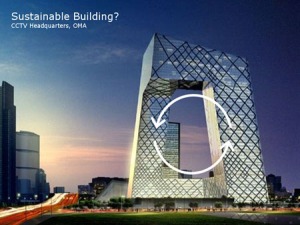The review article today speaks to the need to reduce the energy needs of buildings globally by as much as a factor of 10, in order to reduce CO2 emissions 50% by 2050 (80% in developed countries), so great is the contribution to the atmospheric from this source – the only other comparable one from the urban sector is energy used for transportation. Among the many considerations noted is the huge part played by construction materials specifically concrete while noting the advantages of wood and the need to assess the Life Cycle Analysis of energy contributions during all phases of building construction.

Key Quotes:
“the world needs to reduce the CO 2 emission by 50% from the current level by 2050. For developed countries, this translates into a reduction of 80%, a factor five with respect to nowadays emissions”
“The building industry is one of the human activities with the largest environmental impact.. he construction industry depleted two-fifths of global raw stone, gravel, and sand; one-fourth of virgin wood; and it consumes 40 percent of total energy and 16 percent of fresh water annually..for OECD countries, energy consumption by building varies between 25%–50% of total energy consumption”
“while the heating requirement of a low energy house was reduced by a factor 10 compare to a standard design, the life cycle energy was only reduced by 2.1:1 and the carbon footprint by 2.2:1”
“a net-zero-energy building is ―a building where, as a result of the very high level of energy efficiency of the building, the overall annual primary energy consumption is equal to or less than the energy production from renewable energy sources on site”
“99% of the total emitted CO 2 resulting from a semi detached three bedrooms house in Scotland was originating from concrete and mortar”
“design of sustainable buildings:
- the reduction of the energy consumption of buildings during their operation phase,
- ensure sustainability over the life cycle of buildings namely through the phases of construction, commissioning, operation, maintenance, and decommissioning
- the initial concept of ZEB evolved to include primary consumption energy first, then embodied energy, total energy, and, finally, to become a life-cycle ZEB”
Related articles
- Lexar Homes Announces An Energy-Efficient Building Approach (prweb.com)
- One Tonne Life: Interview with Project Architect Gert Wingårdh on His Energy Efficient Building (Video) (treehugger.com)
- Noise as a Sustainable Energy Source for Buildings (pollutionfree.wordpress.com)
- President Obama Renews Hopes for HOME STAR, Other Building Energy Incentives. (energycircle.com)
- Energy-saving building still needed in recovering market (fresnobeehive.com)


No comments:
Post a Comment